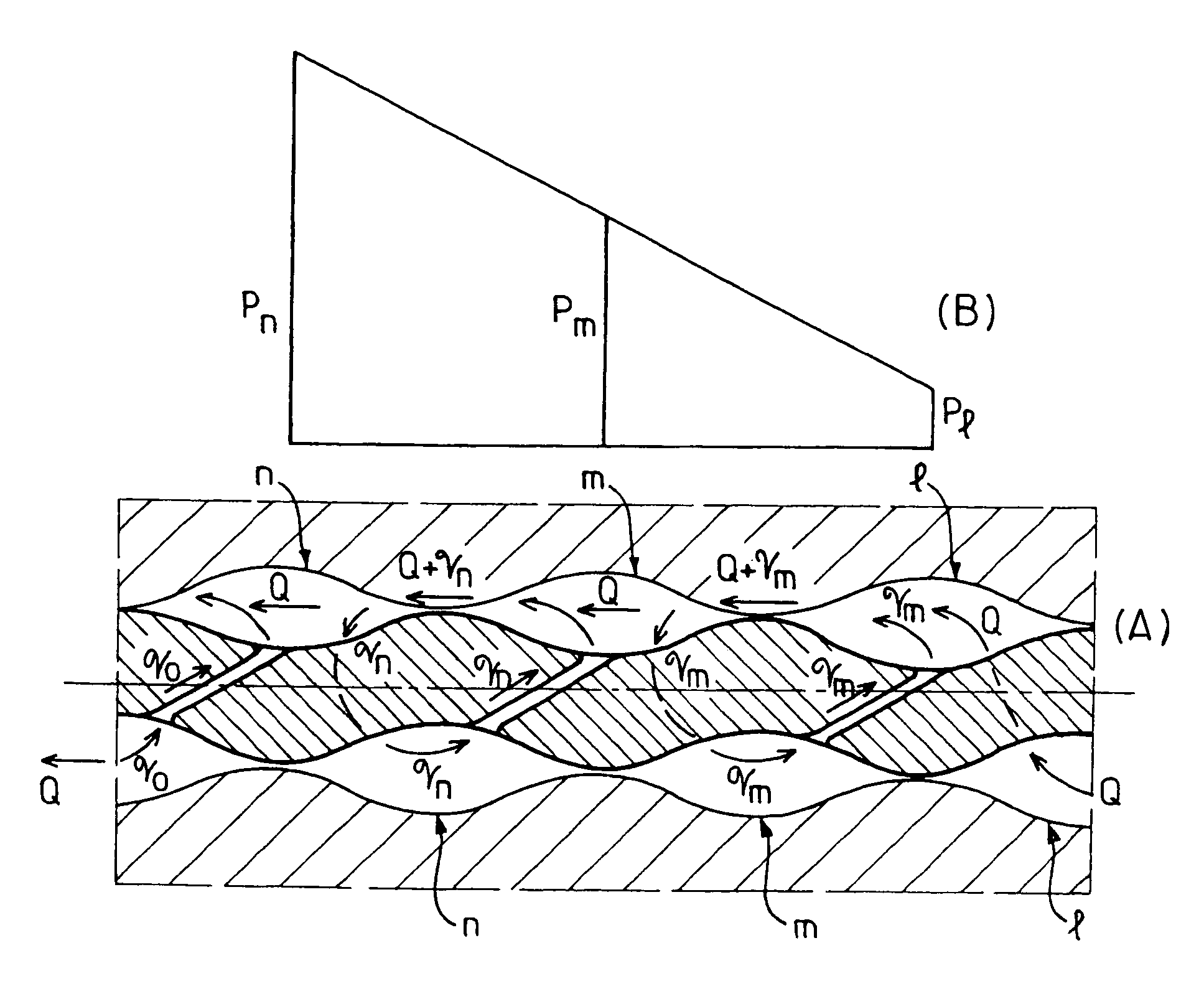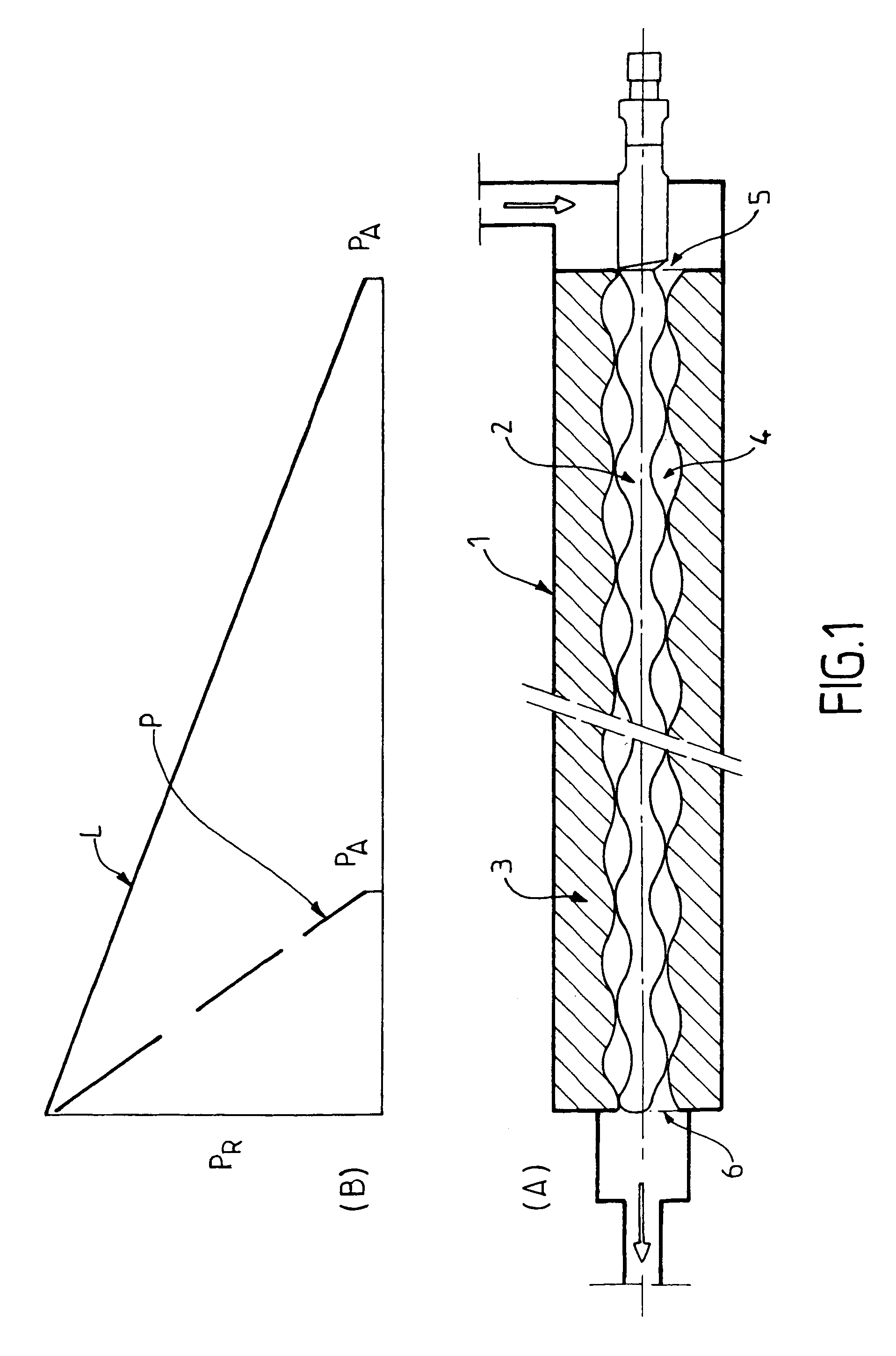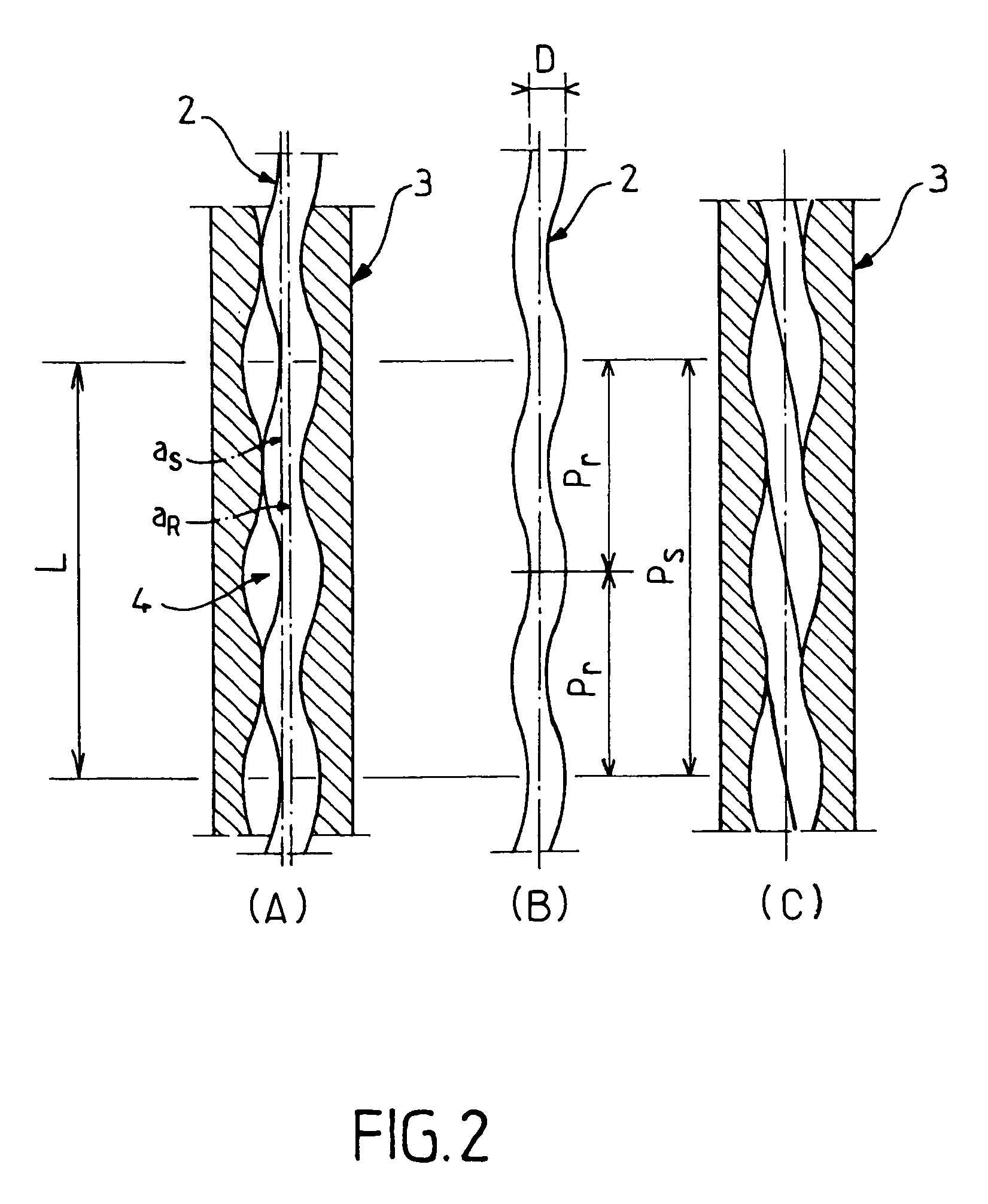Progressing cavity pump
a technology of protruding cavity and positive displacement, which is applied in the direction of rotary or oscillating piston engines, engine lubrication, rotary piston engines, etc., can solve the problems of insufficient gas compression, difficulty in controlling the leakage flow and pressure distribution, and mechanical damage risk, so as to avoid cavitation appearance, improve mechanical behavior and overall reliability, and improve hydraulic performance
- Summary
- Abstract
- Description
- Claims
- Application Information
AI Technical Summary
Benefits of technology
Problems solved by technology
Method used
Image
Examples
example 1
[0141]This test related to a prototype of a conventional PCP conveying a multi-phase mixture (water and air).
[0142]A PCP having thirteen stages (cavities) conveyed a multi-phase mixture delivering 50% water and 50% air, with an inlet pressure of 0.1 MPa (1 bar) and a pressure in the outlet duct of 4 MPa (40 bars), resulting in a gas compression ratio of 40 / 1. Because of the high compression ratio and because the leakage flow rate (between the rotor and the stator) was incapable of compensating for the compressed gas volume, the outlet pressure was achieved over the last four stages (cavities), resulting in a large pressure gain of 1 MPa (10 bars) per stage. All of the work of the pump was achieved by the last four stages, the remaining nine stages of the pump not contributing to compression of the mixture. That high compression concentrated on the last stages was accompanied by a large increase in temperature: the inlet temperature was multiplied by two.
[0143]Such high temperature a...
example 2
[0144]This test related to a prototype of a PCP improved with Hydraulic Regulators (HRs) and conveying a multi-phase mixture (water and air).
[0145]The pump of the present invention behaved quite differently; by means of the hydraulic regulators HRs installed in the rotor, the pressure distribution was rendered uniform, and the temperature was stabilized. Over the last four stages, the spread of hydraulic regulators HRs was two hydraulic regulators per stage and therefore the pressure gain was very small (about 0.1 MPa per stage). Over the remaining nine stages of the pump, the hydraulic regulators HRs were spread at one regulator HR per stage. Under these conditions, the pressure distribution was rendered uniform, resulting in a pressure gain of about 0.3 MPa (3 bars) per stage.
[0146]Therefore, rendering the pressure distribution along the pump uniform results in a small pressure gain for each stage, and in stabilization of the temperatures along the pump.
[0147]The variation in the ...
example 3
[0148]This test related to a prototype of a conventional PCP conveying a liquid (water).
[0149]The same PCP conveyed water with low pressure at the inlet (0.1 MPa (1 bar)) and a pressure of about 0.5 MPa in the outlet duct. Because of the dynamic behavior of the contact between the rotor and the stator, that pump developed very low pressures over stages 7 to 11, with a risk of cavitation.
[0150]Appearance of cavitation leads to damage of the materials, in particular the elastomer of the stator and the metal of the rotor.
PUM
 Login to View More
Login to View More Abstract
Description
Claims
Application Information
 Login to View More
Login to View More - R&D
- Intellectual Property
- Life Sciences
- Materials
- Tech Scout
- Unparalleled Data Quality
- Higher Quality Content
- 60% Fewer Hallucinations
Browse by: Latest US Patents, China's latest patents, Technical Efficacy Thesaurus, Application Domain, Technology Topic, Popular Technical Reports.
© 2025 PatSnap. All rights reserved.Legal|Privacy policy|Modern Slavery Act Transparency Statement|Sitemap|About US| Contact US: help@patsnap.com



